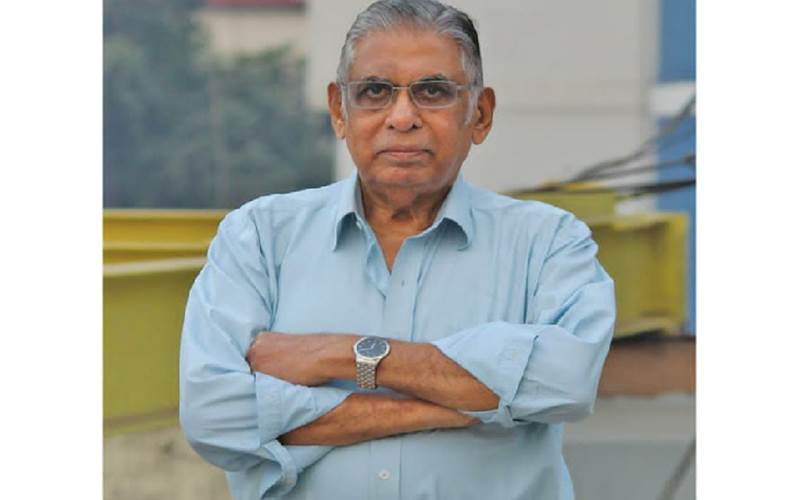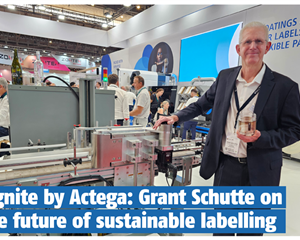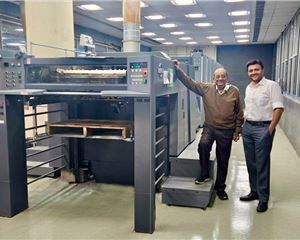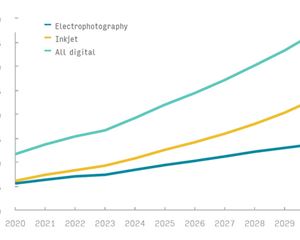Arun Mehta RIP
Besides helming operations at Vakil and Sons, Arun Mehta, in his capacity as the president of BMPA and AIFMP, endeavoured to make technology accessible by organising Pamex in different parts of the country – Bombay (now Mumbai), Bangalore (now Bengaluru), and Calcutta (now Kolkata). In addition, Arun Mehta masterminded one of the first Indian print industry surveys when he was at the helm of the AIFMP. A tribute by Ramu Ramanathan.
08 Jul 2022 | By Ramu Ramanathan
Arun Mehta, chairman and managing director, Vakils was pedigree. Besides being a renowned greeting card specialist and publisher of repute, he had a wonderful eye for colour and print detail.
But what I will remember Arun-bhai is being a treasure trove of terrific fables.
His favourite was how he met Prof SR Mehrotra in 2008, when he walked into his Prabhadevi office. The first thing Mehrotra said, "Are you Arun Mehta, the great-grand-nephew of Dr PJ Mehta?", to which Arun-bhai replied, “Yes, I am, but beyond that I know nothing more.” This was the beginning of their association. In the next few years Mehrotra wrote The Mahatma & the Doctor - The Untold Story of Dr Pranjivan Mehta, Gandhi’s Greatest Friend and Benefactor and Vakils, Feffer and Simons published it. The book is a chronicle of Dr Mehta’s association with Gandhi as a mentor and a friend.
I was witness to the labour of love. It took them six years to put the book together. For Arun-bhai, it was an exhilarating time of his life, as he got to learn. Arun-bhai said simple things. "How one goes about researching. And then, how each fact is verified and re-verified." This was essential, as no one even among Gandhi's close associates, his children, had heard of Dr Pranjivan J Mehta. Therefore, Mehrotra's research had to be perfect.
It was a "Sherlock and Watson" search to discover Pranjivan Mehta's past. Arun-bhai used to say, "For 200 pages of text, he has 23 pages of notes to support his findings. I can say with pride that since the book was released in 2014, no historian has questioned his findings."
Besides being a pedigree printer, he was also part of Sarvodaya International Trust – Maharashtra Chapter and always looking to promote Gandhian ideals of truth, non-violence, peace and communal harmony.
When Arun-bhai learnt that I am living in Dharampur (South Gujarat), I got a family history tutorial. He shared with me, "My great grandfather Bhaichandbhai’s younger brother Popatbhai’s daughter Zabakben was married to Shrimad Rajchandra Ji. His younger brother was Rewashankar who was a jeweller in Gulalwadi in Zaveri Bazaar. Srimadji was his business partner." Readers of PrintWeek will know that Rewashankar built Mani Bhavan on Laburnum Road in 1915. This was Mahatma Gandhi's headquarters when he visited Mumbai. Now, it is a Gandhi museum.
And to think that if it was not for Pranjivan Mehta, Gandhiji may not have returned to India in 1915. How the dots connect...
Arun Mehta: The Master Printer
In the early nineties, I recall a session with Arun-bhai. In his cabin, he showed me how printing of books was rendered by letterpress, with a metal type that was set by hand from individual letters and numbers. Errors could creep in at several stages: the distribution of the type into type cases, the picking of type by the compositor, the missing of errors by proof-readers, and loose letters being pulled out on the press and replaced in the wrong places.
Arun Mehta spoke about Charles, third Earl Stanhope, a scientist, inventor and politician. In 1800, he developed the first book press made completely from metal. Others soon followed. Cast iron, a material of the industrial revolution of the 1700s, gave a far more rigid frame than the wooden Common Press. It was still hand-pulled, but levers increased the force. This allowed much larger multi-page section sheets to be printed for books and broadsheet newspapers. Stanhope and similar designs (such as the Columbian) bridged the gap between wooden and later powered presses. Stanhope’s design could put out around 480 pages per hour, twice what was possible on a Common Press.
Arun-bhai said, in those days, proofreading was very important because there was no way to guarantee error-free output all the way to the printing press. Today, Arun-bhai said, we call this, “maintaining data integrity”.
He used to like the phrase “maintaining data integrity” while referring to correct proofreading. He said, "Today (in 2019) Vakils does a lot of typesetting for overseas pharma companies. The pharma companies insist on 100% accuracy because even a comma out of place could become a million-dollar legal issue."
He added, "Today’s generation of young computer-savvy freelance designers pay scant attention to type setting in their design. When we get a “print-ready file “it is carefully read by our proof-readers and we invariably find mistakes. As a print firm we would be blamed for the mistake."
Arun-bhai felt "proofreading is the most important element in printing”. But with the advent of auto-correction in the computer, it has proved to be a disaster. His tip: All print firms should recheck the files before hitting the send button.
Lifetime Achievement Award 2016
The quintessential master printer
For the past two decades, Arun-bhai had taken a back seat at Vakils. His son Bimal Mehta runs the show and Arun-bhai used to say, he is "doing a mighty good job of it". His daughter Sangeeta Bhansali manages Kahani Tree (perhaps the only children's bookstore in Mumbai) - and it is a delightful little space with readings and tiny gems which will not be found anywhere else.
Arun-bhai used to say, "In the case of BMPA and AIFMP, you can say I have gracefully retired from it. I was actively associated with both the organisations from 1966 - but a few years ago I thought I should call it a day."
And yet, the industry was present on 7 April 2016 when the Mumbai Mudrak Sangh felicitated him for a Lifetime Achievement Award. He delivered a print masterclass as his acceptance speech when he said, "Today, a print business set-up seems to be just out of a fairy tale with print shows and international technology being easily accessible to everyone. In the pre-independence days, it was different.”
Then he proceeded to unveil half a dozen print fables from his 60 years. Mona Doctor, daughter of IM Doctor and Ramesh Kejriwal spoke about Arun Mehta as a ‘dear uncle’ and colleague, respectively. But it was an Arun-bhai show all the way. He had a knack of saying the most complex things in a simple way.
This, and the Vakils legacy ensured that Arun Mehta received two standing ovations from the print VIPs present in the audience.
Couple of days later I went to meet Arun-bhai. His nose was buried in a bunch of colour proofs. He was planning his next book. He looked up, "How was it?" he asked. I gushed. He said, "My actions do not deserve so much.” And then he returned to scouring the miniature paintings on his table. Needless to say, it was accompanied by a commentary about how such-and-such painting had fallen into his lap, followed by a brief comment about how the artist explored light and its interrelation with colour. "Every genuine printer should know his pigments and his dyes, otherwise what's the point."
I am told that a couple of weeks ago, he visited the Vakils press in a wheelchair and requested the team to rev up the press.
And that's how he was remembered at Vakil and Sons. The ancient mechanical presses were started, and they were kept running in his memory. All day today.
Avjo Arun-bhai.
Arun Mehta died on 7 July 2022 and is survived by his wife Sudha and two children Bimal Mehta and Sangeeta Bhansali.
Please share your personal tributes about Arun Mehta with ramu@haymarketsac.com













 See All
See All